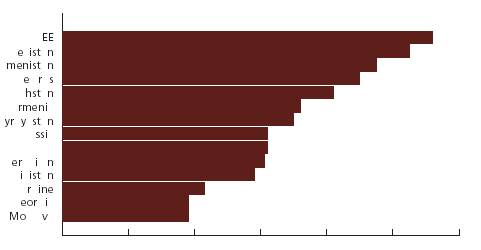| Front page | | Contents | | Previous
| | Next |
Danish - Ukranian Environmental Co-operation 1993-2002
Ukraine (the border country) lies in the Central and Eastern parts of
Europe, occupying the South-Western and Southern parts of the East European Plain - more
than 94 per cent of the area. The country stretches 1,316 km from West to East and almost
900 km from North to South. The total area of Ukraine is 603,700 square kilometres.
Ukraine operates under a unitary system of government, although it has
some characteristics of a federal state. In addition to the national government, there are
27 regional governments and a large number of lower level governments. Ukraine consists of
27 regions, including 24 so-called oblast's (counties), the Autonomous Republic of Crimea
and the cities of Kiev and Sevastopol.
Three main physio-geographical zones can be recognised within the flatland portion of
Ukraine: mixed forests (Ukrainian Polissya), forest-steppes, and steppes. The highland and
mountain regions of Ukraine include the Ukrainian Carpathians in the west and the Crimean
Mountains in the southern part of the country. The highest altitudes within the plain part
of Ukraine reach 300-475 m above sea level; the highest peaks are Hoverla (2061 m) in the
Carpathians and Roman-Kosh (1542 m) in the Crimean Main Range. Almost all of the territory
of Ukraine lies within the temperate climatic zone, with the exception of the Crimean
South Coast, which belongs to the sub-Mediterranean zone and shows some subtropical
climatic features.
Ukraine is a middle-income country and will become a direct neighbour to the EU
following the forthcoming EU enlargement. In the first place Ukraine will by 2004 be
neighbour the new EU members; Poland, Slovakia and Hungary.
Look here!

Estimated level of real GDP in 2001
Note: CEE here includes the Baltic States but excludes the South-Eastern Europe.
Today, the country finds itself midst in a most difficult transition towards democracy
and market economy. This transition affects all spheres of the society. Environmental
policy is no exception.
In recent years, however, Ukraine has experienced positive growth rates for the first
time since 1989. The growth in real GDP amounted to 5.9 per cent in 2000 and an estimated
9.1 per cent in 2001. In 2002, the growth rate in real GDP amounted to an estimated 4.1
per cent.
